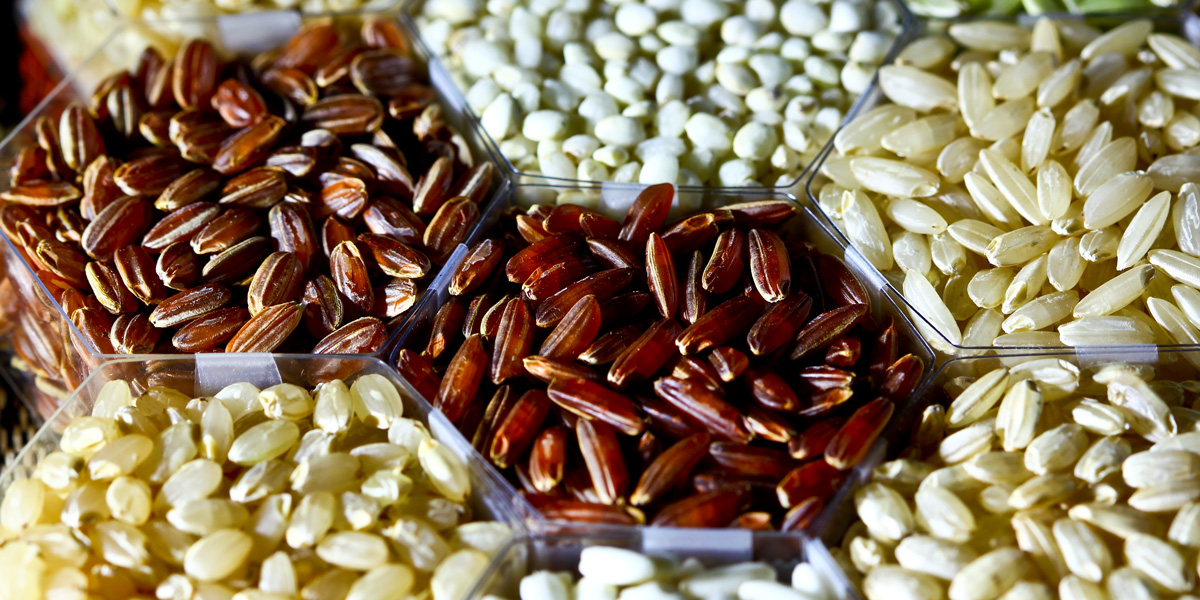
Long-forgotten varieties of the staple crop can survive flood, drought and other calamities. The challenge is bringing them back
A fascinating and shocking article has been published in Scientific American by Dr Debal Deb, an ecologist and "seed warrior" who has conserved more than 1420 of India's native rice varieties in the last 25 years.
We've heard that this article will only be free to access for the next three days, so don't delay reading it.
The article describes how India originally possessed some 110,000 landraces of rice with diverse and valuable properties. These include enrichment in vital nutrients and the ability to withstand flood, drought, salinity or pest infestations.
However, the Green Revolution covered fields with a few high-yielding varieties, so that roughly 90 percent of the landraces vanished from farmers' collections.
High-yielding varieties require expensive inputs. They perform abysmally on marginal farms or in adverse environmental conditions, forcing poor farmers into debt.
Collecting, regenerating, documenting the traits of and sharing with farmers the remaining landraces, to restore some of the lost biodiversity of rice, is Debal Deb's life mission.
The shocking aspect of the article is the author's account of the behaviour of those who run the major non-farmer-controlled seed banks, such as that of the International Rice Research Institute (IRRI) and the National Bureau of Plant Genetic Resources in New Delhi. Dr Deb writes that they completely ignored his requests to release flood tolerant rice seeds to farmers after a flash flood destroyed their crops. He writes, "To my knowledge, no farmer in any country has ever received any seeds from these lofty ex situ, or off-site, gene banks — even though their accessions were built on contributions from traditional farmers."
In contrast, however, "the gene banks do make their accessions available to seed companies for hybridization programs and patenting. An estimate by the International Food Policy Research Institute indicates that by 1996 about three quarters of U.S. rice fields had been sown with material descendant from the IRRI collection. And in 1997 the U.S. Patent and Trademark Office granted the broadest ever patent on an indigenous rice, for a hybrid strain of basmati whose parents originated in South Asia and were accessed from the IRRI collection, to Texas-based company RiceTec. The IRRI, which supposedly holds its accession in trust for the world’s farmers, itself applied in 2014 for an international patent on a yield-boosting rice gene called SPIKE discovered in the Indonesian landrace Daringan. (The governing body of the International Treaty on Plant Genetic Resources for Food and Agriculture has reviewed the legality of this controversial application but has yet to announce its decision.)"
Dr Deb operates his seed banks on an open access basis to farmers.
Dr Deb points out another problem with seed banks that operate at a distance from farmers: the seeds are "handicapped by long isolation": "Rice seeds are dried and preserved at –20 degrees Celsius, which keeps them viable for up to 35 years. Frozen in time, they are separated from the constantly evolving life-forms in the outer world. When grown out after 35 years, they will have lost any inherent resistance to specific pathogens, which will meanwhile have evolved into newer strains. In contrast, farmers’ in situ seed banks are necessarily low budget, so they must sow all the seeds every year — otherwise most of the rice would fail to germinate. Thanks to this imperative, the seeds conserved on farms continue to coevolve with diverse pathogens and pests."
Dr Deb has a lesson for those who believe that GM will solve problems of malnutrition. He draws a telling contrast between GM iron-enriched rice and non-GM indigenous varieties that are naturally rich in iron: "Numerous folk rice varieties contain various micronutrients that are absent from modern cultivars. Our recent studies identified at least 80 folk varieties that contain more than 20 milligrams of iron per kilogram of rice, with the highest levels recorded for Harin kajli, Dudhé bolta and Jhuli rice, which range from 131 to 140 milligrams per kilogram. Compare this range with the 9.8 milligrams of iron per kilogram of the transgenic iron-fortified rice IR68144-2B-2-2-3, developed at IRRI at enormous expense."
Dr Deb writes, "Given the failure of modern agricultural research to provide marginal farmers with any reliable germ lines of rice, a large collection of folk rice varieties, with their fine-tuned adaptations to adverse conditions, is our best bet."
Dr Deb's seed collections have repeatedly come to the rescue of farmers hit by extreme weather conditions. Referring to a cyclone that hit West Bengal and Bangladesh in 2009, he explains that rice fields were inundated with salt water, leaving the soil salinated. Farmers were supplied with salinity-tolerant rice seeds from Dr Deb's seed banks: "These were the only rice varieties that yielded a sizable amount of grain on the salinated farms in that disastrous season."
Dr Deb concludes, "Such disasters prove, time and again, that the long-term sustainability of rice farming depends crucially on the restoration of traditional farming practices based on biodiversity and use of the full diversity of crop varieties that have survived the onslaught of industrial farming."